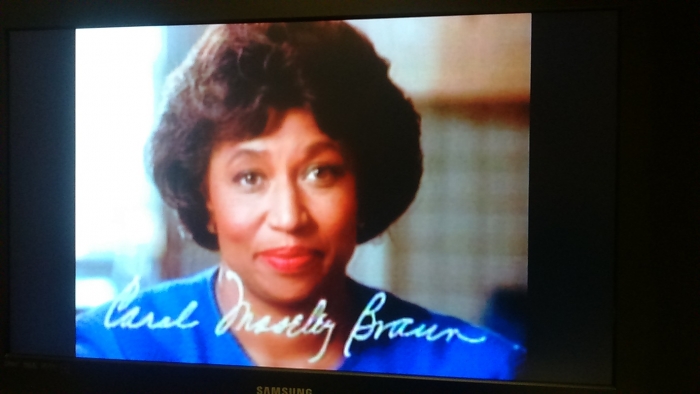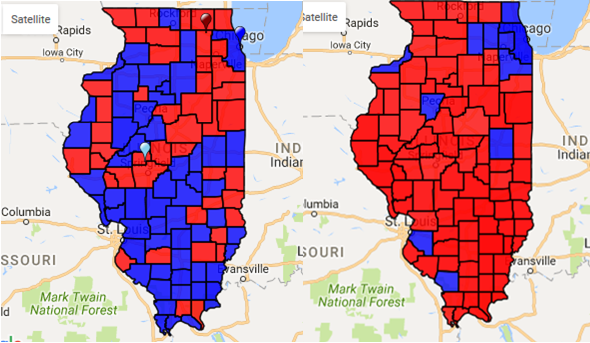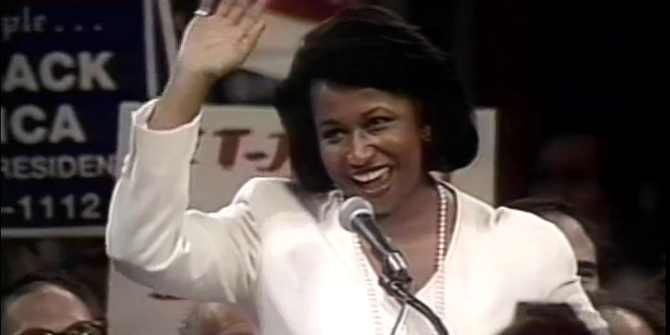 The 2016 presidential election saw Democratic nominee Hillary Clinton underperform in large swathes of the rural Midwest, areas that have historically supported Democrats. Richard Johnson examines the lessons modern Democrats can learn from Carol Moseley Braun's 1992 Illinois Senate campaign, which saw her become the first black woman in the US Senate. He writes that one of the most important points from Braun's campaign is that she actively appealed to white working-class voters by emphasizing change and populist anti-elitist themes.
The 2016 presidential election saw Democratic nominee Hillary Clinton underperform in large swathes of the rural Midwest, areas that have historically supported Democrats. Richard Johnson examines the lessons modern Democrats can learn from Carol Moseley Braun's 1992 Illinois Senate campaign, which saw her become the first black woman in the US Senate. He writes that one of the most important points from Braun's campaign is that she actively appealed to white working-class voters by emphasizing change and populist anti-elitist themes.
In 1992, Carol Moseley Braun became the first black woman elected to the US Senate. Brown won Illinois with 95 percent of the black vote, and in some black-majority Chicago districts her support was over 99 percent.
Figure 1 – Braun for Senate TV ad (1992)

Source: Kanter Archive, Center for Political Communication, University of Oklahoma
However, Braun's victory extended far beyond the black community. Nearly 75 percent of Brown's support came from white voters, and she outpolled her Republican opponent Rich Williamson (49 percent to 46 percent) in Illinois' twenty-eight counties with almost no (less than 1 percent) ethnic minorities . Braun made a strong showing in downstate Illinois, defeating Williamson by a 2:1 margin. He also topped presidential candidate Bill Clinton by 177,776 votes. Overall, Brown won 48 percent of the white vote.
Last week, Hillary Clinton also won Illinois, but the spread of her victory is noticeably different. Outside of Chicago and its suburbs, Clinton was uncompetitive in large swaths of the Prairie state. For example, Donald Trump won Franklin County, a historic coal mining county in the south of the state with 68 percent of the vote. The county is 97.7 percent white, and some commentators would have you believe that those voters are simply out of reach for Democrats.
However, they were once democrats. In 1992, Carol Moseley Braun won Franklin County with over 60 percent of the vote. What happened that a black, Democratic woman won this county overwhelmingly twenty-five years ago, yet the result was reversed last week?
Figure 2 – Left: 1992 US Senate Election. Right: 2016 Presidential Election

Source: OurCampaigns.com
There are many reasons, but one lesson learned from the Braun campaign is that it never gave up on those voters. The campaign acknowledged that they would be hard to convince – that as a black woman it would take extra work for Braun to reach these white working-class men and women. But the campaign also understood not to use voters' conservative racial attitudes as an excuse *not to try*.
I've read the Braun campaign's internal strategy documents where they discuss how to win over downstate voters. I reproduce below a relevant section from a note I found in the Carol Moseley Braun Archive at the Chicago History Museum:
The so-called Reagan Democrats:
These voters have Democratic demographics and lifestyles, but have often drifted away from voting Democratic in recent years due to appeals on race, cultural issues, defense/foreign affairs, and taxes… However, these voters typically care more about African-Americans. and he may be nervous about a female senator. In addition, they are the main targets of Republicans for negative advertising.
So CMB will have to do its own persuasion for these voters to get them to vote for it—positive persuasion that emphasizes change, populist economics, anti-elite and anti-Washington issues, and hard-line democrats. issues such as jobs. healthcare and education.
And maybe negative persuasion that would focus on RW [Rich. Williamson] as a wealthy DC insider who has constantly manipulated the system for his own selfish ends, who dyes his skin on fundamental issues and has served the rich and powerful throughout his career.
Issues – populist economics? anti-Bush, anti-DEC ties to [Ross] Perot? we invest in America, we take care of our own. change in DC
What is clear is that Hillary Clinton apparently failed to get a similar message across. Clinton did not maintain the same messaging discipline as Brown on the “core Democratic issues” and was unable to overcome the “DC insider” image that Brown used so effectively against her Republican opponent.
Indeed, Braun's campaign script (“invest in America,” “take care of our own”) could have been part of Donald Trump's message to working-class whites. But as Braun's campaign shows, there's no reason why a Democratic candidate can't articulate these issues while remaining committed to other core leftist principles of equality and social justice. It's an unapologetically populist message that Democrats would do well to rediscover.
Featured Image Credit: CSPAN
Please read our comment policy before commenting.
Note: This article represents the views of the author, and not the position of USAPP – American Politics and Policy, nor the London School of Economics.
_____________________
 Richard Johnson – Nuffield College, University of Oxford
Richard Johnson – Nuffield College, University of Oxford
Richard Johnson is a DPhil candidate in Politics at Nuffield College, Oxford. He is currently a visiting graduate researcher at the Yale Institute for Social and Political Studies. His doctoral research focuses on race, representation, and elections in the United States.

